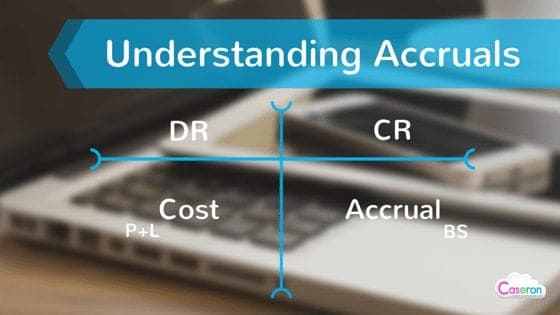
All additional income from secondary operations or investments and one-time payments for things such as the sale of assets are added. While income indicates a positive cash flow into a business, net income is a more complex calculation. Profit commonly refers to money left over after expenses are paid, but gross profit and operating profit depend on when specific income and expenses are counted. The mix of products or services that a business offers can also influence its gross profit.
In traditional bookkeeping, books are delivered after the month is over, eliminating the ability to pivot when the issue starts. Take a read of the given article to underdtand the difference between gross, operating and net profit. There’s another measure that you can take to increase your net profit. However, after deducting all the costs that it has incurred, this falls to a net profit of $11,000. Below is a portion of the income statement for JC Penney Company Inc. (JCP) as of May 5, 2018. A financial professional will offer guidance based on the information provided and offer a no-obligation call to better understand your situation.
Do you own a business?
As an example of gross profit, let‘s say your company revenue for April is $100,000. Your gross profit would be $60,000 (total sales revenue – COGS), which is a 60% margin. This gross profit calculation does not take administrative expenses or operating expenses, such as rent or insurance into account. Because margins can fluctuate and depend on a number of factors, knowing the benchmark values can provide an estimated guideline to assess your business.

However, if you’re starting and have significant upfront costs, you may operate at a net loss at the start. For instance, a limited dataset — including Salesforce, Asana, and HubSpot — showed that 83% of SaaS companies were operating at a loss when they went public. Gross profit and net profit both provide valuable insight into your business’s financial health.
GAAP Accounting Rules: Understanding the 10 Principles
Before you grow your net profit margins, you need to have a baseline of your current profits and a method for consistently measuring them. To calculate net profit, you start with total revenue (also known as your top line), add all positive cash flow amounts, and subtract all negative cash flow amounts. Net profit is also referred to as the bottom line since it’s the last line on a company’s income statement. To determine if you should include an expense in COGS, ask whether you’d have that expense if you stopped selling products tomorrow.
Not to mention, automation also reduces the errors that occur when you prepare reports by hand, so you can feel confident you’re making decisions based on the most accurate information. However, you should track your cash inflows and outflows every week at a minimum. This is the lifeline of your business — and by keeping an eye on your cash flow, you can see signs of a problem before it occurs and make the appropriate decisions. Your business’ net profit tells you if you’ve actually achieved profit.
A high-profit margin also sends a positive signal to potential investors, lending credibility and stability to the business. If your sales are up, but your margins are down, you may need to take a deeper look at how you’re running your business. Understanding these metrics—involving income, revenue, and profit—and the benchmarks of each of these can provide insight into a business’s overall profitability. Two popular metrics commonly used to gauge the success of a business are profit margin and net profit. And, while net profit is great at reflecting how much profit is generated from revenue, for some applications, it’s arguable that a business’s profit margin is a more valuable metric. This is because profit margin allows you to gauge how efficiently your business is running overall.
As you can see, Apple’s operating margin is phenomenal at more than 30% and just 9.6% below its gross margin. This operating margin shows the strength of the company’s business and illustrates why it’s one of the most valuable companies in the world. If you prefer to calculate using gross profit (calculation #2 above), then you would subtract your operating expenses ($34,783) from your gross profit ($17,350) to get -$17,433. For many startups, operating profit is of utmost importance as it is a key indicator of profitability. If you’re spending more money to operate your business than you’re bringing in, then you need to make a change to increase your operating profit.
Ask a Financial Professional Any Question
Understanding these factors can help businesses develop strategies to optimize their gross profit. It’s important to note that many companies track both operating profit and gross profit. A company’s net profit or net income) is its profit after all deductions have been made. In other words, it’s what is left over to be reinvested and/or paid out to the company’s owners.
BIOCORP Reports Half-year Results as of June 30, 2023 – Business Wire
BIOCORP Reports Half-year Results as of June 30, 2023.
Posted: Mon, 04 Sep 2023 16:00:00 GMT [source]
A high gross profit suggests that a company is managing its manufacturing or service delivery costs effectively and generating a sufficient markup on its goods or services. This not only indicates profitability but also leaves room to cover operating expenses, invest back into the business, and provide returns to shareholders. Gross profit is your retained revenue after incurring the total cost it takes to produce and sell your product or service (COGS). However, one important difference is that gross profit doesn’t account for your operational expenses, while operating profit does.
Geopolitical Volatility & Geoeconomic Rivalry: Impact on Operational Resilience
Derived from gross profit, operating profit is the residual income after all costs have been included. Operating profit is also called operating income or earnings before interest and tax (EBIT). EBIT can include non-operating revenue, which is not included in operating profit. If a company doesn’t have non-operating revenue, EBIT and operating profit will be the same. One business could classify certain costs as operating costs, while another might classify them within the cost of goods sold. The result is that they both may have the same operating margins, but different gross margins.
- There are different measures of profit margins, and they tell you different things about your company’s financial performance.
- This reinvestment could fund research and development, marketing initiatives, staff training, infrastructure upgrades, and other activities that contribute to business growth.
- So, a shoe company’s operating profit will be the profit earned from only selling shoes.
For instance, if you have a high debt load, you can have a positive operating profit as well as a negative net profit — or net burn. This shows your business’s core operations are sustainable, and you can make better business decisions with this knowledge. You’d include both your revenue from sales and income from investments. For example, in e-commerce, the average net profit margin how to calculate profit margin formula + examples is 0.64%, whereas the average total market net profit margin is 7.77%, as reported by NYU Stern School of Business. But this can fluctuate depending on a number of factors, such as the number of sales, merchandising costs, and product prices. As a business owner, familiarizing yourself with some accounting rules and concepts can be vital for the wellbeing of your business.
COGS does not include indirect expenses, such as the cost of the corporate office. COGS directly impacts a company’s gross profit, which reflects the revenue left over to fund the business after accounting for the costs of production. Gross profit does not account for debt expenses, taxes, or other expenses required to run the company. A ‘good’ gross profit varies by industry, company size, and business model.

For example, a company might have a high gross profit but a low net profit if it has high operational costs, interest payments, or tax obligations. Therefore, while both gross profit and net profit are important, they offer different perspectives on a company’s financial health. Gross profit also provides business owners with valuable insight into pricing strategies.
Operating Profit Formula: Option #2
Gross profit margin provides an indication of how well a company is managing its direct costs of goods sold. The gross margin can also be used to track a company’s financial health over time. If the gross margin is decreasing, the company is becoming less efficient at producing its goods or services, which could impact profitability. Conversely, an increasing gross margin means that the company is becoming more efficient or is able to charge higher prices.
Multiple rounds of funding happen in the first few years of a startup’s life. Capital investors want to see a company’s profitability, which significantly depends on how a company operates. When operating expenses consistently balance, the fluctuation of net income doesn’t become a cash flow problem.
